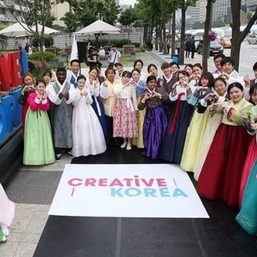SUMMARY
This is AI generated summarization, which may have errors. For context, always refer to the full article.
![[OPINION] The paradox of Japan](https://www.rappler.com/tachyon/r3-assets/612F469A6EA84F6BAE882D2B94A4B421/img/AA6835EA41DC46A4B7B2E487F462FB85/japan-and-foreign-workers-march-03-2020-002.jpg)

After boarding a taxi at Haneda airport and showing the driver the hotel name and address in Japanese characters, he asked me, “Is temperature okay?”
At first, I thought he meant “Do you have a fever?” – I arrived in Tokyo as the number of coronavirus cases started to rise – but he pointed to the heater/air conditioner on the dashboard.
I had to get my bearings. This was something new.
Through the years, in my travels to and months-long stays in Japan, I remember only one time when a taxi driver spoke to me in English. This surprise greeted me and more; I encountered sales people at a pharmacy who seemed to have a larger store of English words.
Of course, this is all part of the big preparation for the Tokyo Olympics in July. That’s the software part.
The more visible lead-up activities are the renovation of a number of subway stations, the transfer of the famous Tsukiji market to another place apparently for sanitation reasons – though the vast empty lot will be used as a parking area for the Olympics – and the frenzied rebuilding of the national stadium with heat-busting features, which was unveiled December last year.
What’s fascinating is the use of advanced technology like driverless cars which can be opened by using smart phones (also to pay fares), robots to translate Japanese into English, recycling of old phones to be used for medals, and more.
All this shows Japan’s determination and will to roll out the best for the world to see and experience.
Slow rise
Yet here lies a paradox: While the upcoming summer Olympics is a big door Japan is opening to the world, it doesn’t do as much for the entry of foreign labor onto its shores. The third largest economy in the world remains immigration-shy despite its growing need for workers in light of its aging and declining population.
Slowly, though, Japan has taken steps to employ foreign workers. Last year, it implemented a set of new visa guidelines aimed at recruiting 340,000 skilled workers until 2024: they need to speak Japanese and can only stay for 3 to 5 years. Many will be placed in construction, elderly care facilities, and in farms.
None of these workers are referred to as “migrants.” Their visas define them according to the program they’re in: Technical Intern Training Program and Specified Skilled Workers. These categories seem to overlap as “technical interns” – the goal is to be able to apply the technology they learned in Japan in their home countries – are also deployed in areas assigned to skilled workers.
My sense is the use of these categories is meant to allay fears among the Japanese about the influx of foreign workers. The phrase “technical interns” denotes a temporary arrangement that’s geared towards learning more than making a living and it doesn’t threaten Japanese workers. In fact, the title of a presentation by the Immigration Services Agency of Japan to our group was this: “Efforts for Acceptance of Foreign Nationals and Harmonious Coexistence.”
Vietnam, Nepal, Cambodia, Myanmar
We’re seeing a new labor landscape in Japan. Vietnam has outpaced the Philippines as the third largest source of foreign labor, following China and South Korea. What’s noticeable, though, is the increasing presence of workers from Myanmar, Cambodia, Indonesia, and Nepal.
During our 2-week seminar (February 17 to 28) for select ASEAN journalists on foreign labor issues hosted by the Sasakawa Peace Foundation, we met young caregivers from Myanmar working in a hospital-like facility for the elderly in Kobe, Indonesians in a strawberry farm outside Tokyo, and students from Nepal and Myanmar in a Lawson branch in Tokyo.
It is equally remarkable to see foreign faces in convenience stores and giant shops like Uniqlo. Lawson employs mainly students who work part-time in their 15,000 outlets all over Japan. Of their 195,000 employees, 14,000 are non-Japanese and they come from the top 3 sending countries (for Lawson): Nepal, China, and Vietnam. This number of foreign workers has increased slightly (1.5%) from 2018. Lawson has also set up a training center in Vietnam where potential recruits learn Japanese language and culture, apart from the A to Z of selling in a convenience store.
More foreign residents
In a visit to Tokyo a year ago, my Japanese friends took me to a restaurant in Shinjuku where most of the waiters were Cambodian. This was my first introduction to non-Japanese staff in a restaurant – and my friends wanted to show me a change taking place in their country.
Japan has, for a long time, been a “closed society,” with a near-homogenous population. But this is changing albeit in a glacial pace, with the number of foreign residents rising from 850,000 in 1985 to 2.7 million in 2018.
“The pace of change is very slow,” said Songil Kim, 56, a third-generation Korean who heads an NGO that supports foreign workers in Kobe. “Even some Japanese are impatient.”
It is likely that the 5-year program to recruit foreign workers, which ends in 2024, is meant to prepare Japan for more outside labor. That would require a near-Olympian change in mindset. – Rappler.com
Add a comment
How does this make you feel?















There are no comments yet. Add your comment to start the conversation.